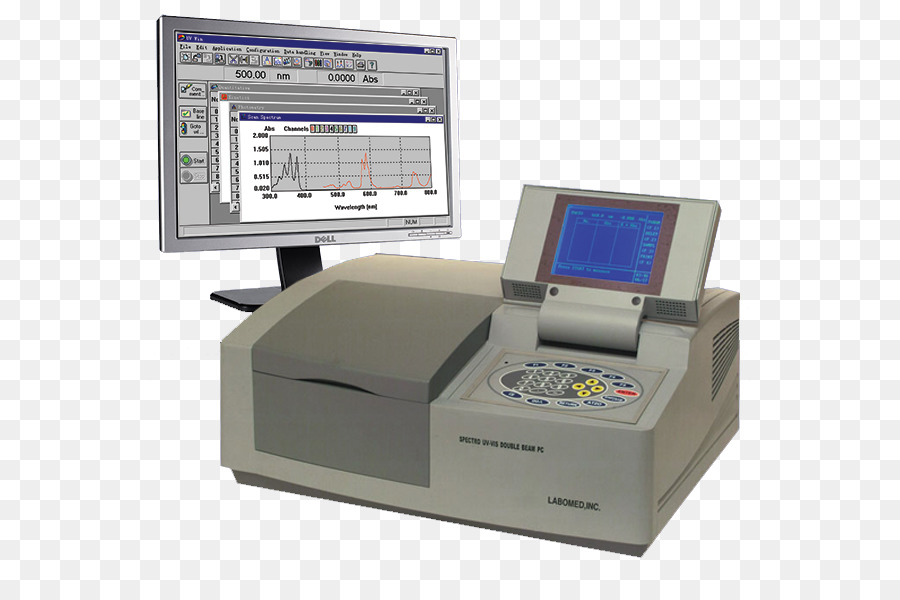IQ, OQ, PQ for UV-Visible Spectrophotometers
OQ test design incorporates both modular and holistic testing, which is a proven and regulatory acceptable approach. Wavelength tests are used for optical assembly modules. Remaining tests are used for the evaluation of the whole spectrophotometer.
In the performance of IQ, OQ and PQ, it is expected to use Certified reference standards and calibrated traceable thermometers are used.
Rationale: Wavelength Accuracy is performed as a verification of the xenon lamp or the deuterium lamp performance in other models. The xenon lamp produces a photometric peak maximum at 541.92 nm. The deuterium lamp produces photometric peak maxima at 486.0 nm and 656.1 nm.
In this test, Wavelength Accuracy is verified by scanning a spectrum a number of nanometers above and below the theoretical absorbance maxima for the deuterium lamp. The test passes if the reported wavelength maxima do not differ from the expected values by more than the accuracy limit. This test is applied to all UV/Vis spectrophotometers and meets all major pharmacopoeia and ASTM requirements.
Wavelength Accuracy – Holmium Oxide in Perchloric Acid Solution
Rationale: Wavelength Accuracy is calculated by comparing the reported lambda maxima values against the expected lambda maxima values of a Holmium Oxide in Perchloric Acid test solution (Holmium Perchlorate). The test passes if the reported wavelength maxima do not differ from the expected values by more than the accuracy limit. This test is applied to all UV/Vis spectrophotometers and meets all major pharmacopoeia and ASTM requirements.
Spectral Resolution
Rationale: Decreased spectral resolution can impact the photometric sensitivity and selectivity. Spectral Resolution is determined by calculating the peak-to-trough ratio between the reported absorbance maximum and minimum from a scan of 0.02% Toluene in Hexane. The absorbance maximum should occur at approximately 269 and the minimum at approximately 266 nm. The test passes if the calculated spectral resolution ratio is greater than or equal to the test limit. This test is applied to all UV/Vis spectrophotometers and meets European Pharmacopoeia requirements.
Stray Light – Potassium Chloride at 198 nm
Rationale: The Stray Light Test measures the presence of light outside the bandwidth of a selected wavelength that reaches the detector. The presence of stray light can decrease the photometric selectivity, increase the photometric response and create non-linear response of the instrument causing problems with quantitative analysis. Potassium Chloride will completely absorb light below 200 nm, however is transparent above 200nm. The test will pass if the Percent Transmittance is less than 1.0% at 198 nm. This test is applied to all UV/Vis spectrophotometers and meets all major pharmacopoeia and ASTM requirements.
Photometric Accuracy – Potassium Dichromate
Rationale: The Photometric Accuracy – Potassium Dichromate Test uses two strengths of the Potassium Dichromate standard Firstly the 60 mg/L Potassium Dichromate standard is used to measure the difference between the expected absorbance values (listed on the Certificate of Analysis) and the actual absorbance values reported by the instrument at four wavelengths: 235 nm, 257 nm, 313 nm, and 350 nm. The Test passes if the expected absorbance values are within +/- 0.01 AU of the actual absorbance values at the four wavelengths.
Then the 600 mg/L Potassium Dichromate standard is used to measure the difference between the expected absorbance value (listed on the Certificate of Analysis) and the actual absorbance value reported by the instrument at 430 nm. The Test passes if the expected absorbance value is within ± 0.012 AU of the actual absorbance value at 430nm. This test is applied to all UV/Vis spectrophotometers and meets all major pharmacopoeia, ASTM, and NIST requirements.
